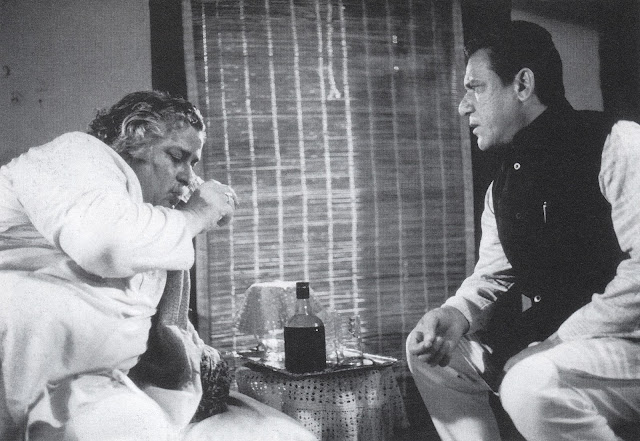My Mirror column:
A new film casts Jennifer Aniston as a New York City hairdresser caught up in a very European murder, making our columnist think about another fictional hairdresser embroiled in another murder
Kyle Newacheck’s Murder Mystery (on Netflix) is an affectionate takedown of the genre, mixing comedy with thrills – and caricatures with characters – in a way that feels surprisingly satisfying. An ordinary New York couple called Nick and Audrey Spitz (Adam Sandler and Jennifer Aniston) land in the midst of a European murder that’s equal parts hamming and high intrigue.
A new film casts Jennifer Aniston as a New York City hairdresser caught up in a very European murder, making our columnist think about another fictional hairdresser embroiled in another murder
 |
| Jennifer Aniston as a hairdresser in the recent film Murder Mystery |
Kyle Newacheck’s Murder Mystery (on Netflix) is an affectionate takedown of the genre, mixing comedy with thrills – and caricatures with characters – in a way that feels surprisingly satisfying. An ordinary New York couple called Nick and Audrey Spitz (Adam Sandler and Jennifer Aniston) land in the midst of a European murder that’s equal parts hamming and high intrigue.
The setting, a high-volume homage to all those Agatha Christie plots with a cast of suspects stuck on a train or in a country house, is a yacht in the middle of the Mediterranean Sea, with the first murder taking place while all the guests are literally present in the same room. There’s a charming viscount with a perfect jawline; there’s his sultry young Japanese ex-girlfriend who’s recently dumped him for his ancient uncle; there's the uncle himself, a millionaire with a mane of white hair that doesn't make up for his shrivelledness. There’s the obligatory colonel, updated from the moustachioed white man with a past in India to a black man who once lost an eye saving the millionaire’s life. There’s the colonel’s bodyguard, Sergei, a hulk made more forbidding by his refusal to make conversation. There’s a preening actress, a racing car driver, and the millionaire’s unhappy unsatisfactory son. Just as soon as we’ve met everyone, the millionaire announces his intention to disinherit everyone present in favour of his new bride – and is promptly murdered. Enter the other necessary stock character: a detective with a French accent and a high opinion of himself, a la Hercule Poirot.
Screenwriter James Vanderbilt (of Zodiac fame) keeps things zippy and droll, making Nick and Audrey prime suspects for a murder we know they haven't committed – and that they now need to solve in order to save themselves. The film is good fun at this level. But alongside the US-Europe jokes – the NYPD cop converting from dollars as he tips a caricaturish butler, or wearing shorts to the banquet on board yacht – I enjoyed the film for the oddly believable married couple at the centre, with their totally believable US-style quarrels over brands of allergy medication and anniversary gifts. Sandler, as a cop who's failed the detective test three times and taken to keeping that fact from his wife, surprised me with a sense of unspoken vulnerability. But Aniston, as his frustrated hairdresser wife waiting for the European honeymoon he promised her 15 years ago, surprised me more.
We first meet Audrey in the salon where she works, bonding with female clients over the unromanticness of men. As the film moves along, Vanderbilt gives Aniston a more sharply defined sense of unfulfilled aspirations. While her husband snores beside her, Audrey is the one who sneaks into business class and befriends a flirtatious viscount. When he invites the couple to his uncle's yacht in lieu of their tour bus, Nick flies off the handle, thinking it's an Indecent Proposal moment. And yet Nick is supposedly the practical one, the 'real cop' to Audrey's naive murder mystery fiend. The more earnestly his wife throws herself into her honeymoon-turned-adventure, the more he undercuts her: “This is what I do for a living, sweetheart – you're a goddam hairdresser!” Nick apologises quickly after, but the barb sticks. “Look who figured it out, the hairdresser!” Audrey taunts him later.
 |
| Kirsten Dunst as the hairdresser Peggy Blomquist in the crime series Fargo (2015) |
Watching Audrey reminded me of another hairdresser in another sort of narrative: Kirsten Dunst's fabulous 2015 performance as Peggy Blomquist in the second season of the magisterial crime drama Fargo. Peggy, too, is a woman in a marriage and a life that doesn't quite live up to her desires. Her husband's only dream is to own the butcher shop in their small town. Peggy, meanwhile, thinks she has great style, hoards fashion magazines and is increasingly obsessed with a self-discovery workshop recommended by her beauty salon boss. Like Audrey and Nick, Peggy and her husband find themselves caught up in an increasingly surreal murder case. Fargo's iteration of this is of course chilling, not funny. Peggy's response, which is to start to imagine that expensive course as the bridge to an all-new life, is chilling, too. Murder Mystery makes Audrey's aspirationalness much more familiar, as in a hilarious scene when her budget fashionista self is mocked: “Your shoes still have a sticker from Marshalls,” sneers the Japanese heiress holding them at gunpoint. “They have name brands now,” says Nick defensively, even as Audrey scrambles to take the sticker off.
Is there something about hairdressers that makes them such evocative carriers of the unfulfilled American dream? We don't, in either Murder Mystery or Fargo, see very much of Audrey or Peggy at work, but it is as if they carry deep within themselves the desire for the makeover. The transformative hairdos they give other women are a gift they would love to receive themselves.
Published in Mumbai Mirror,






